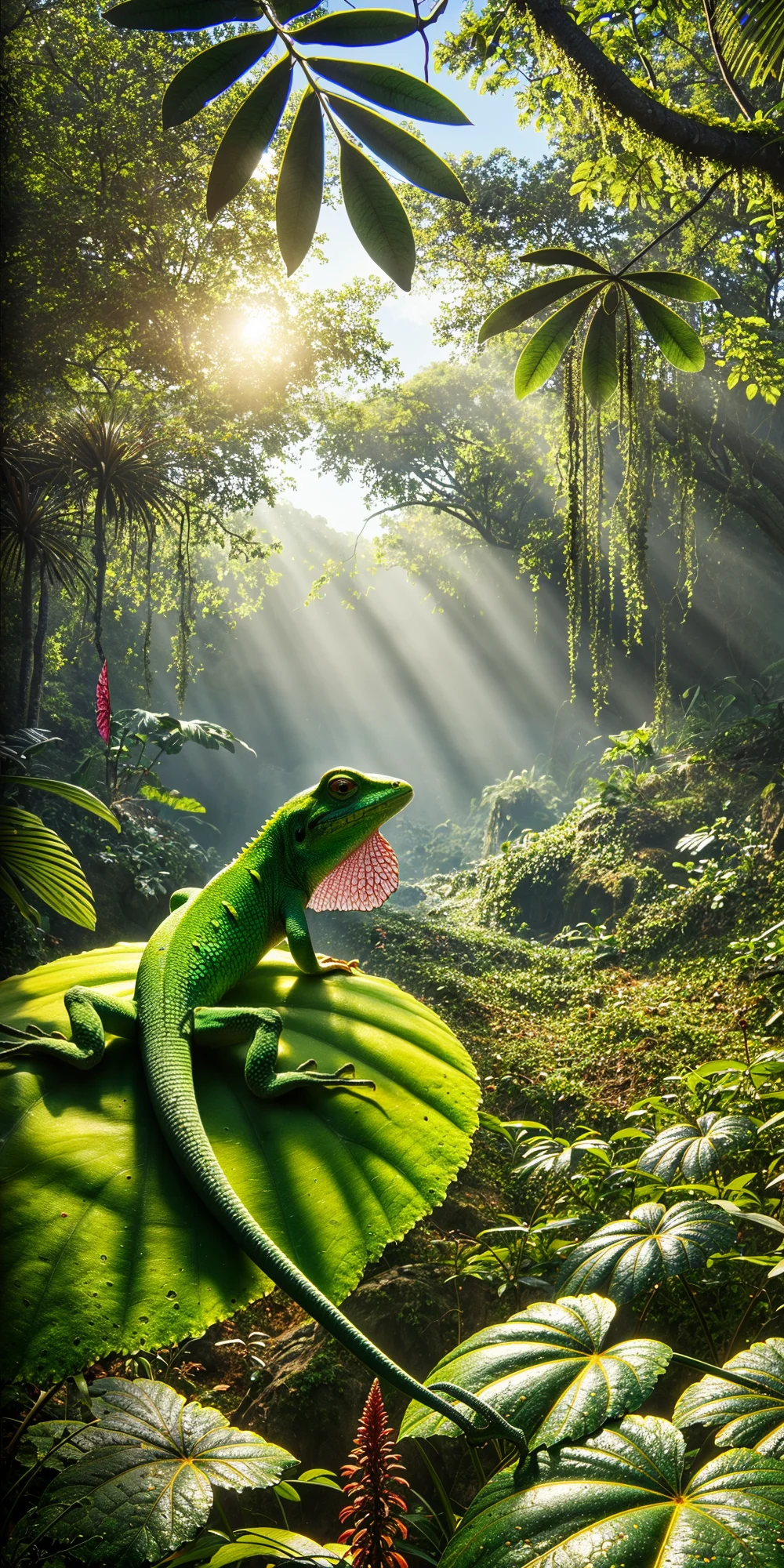The Green Anole
The Green Anole, also known as the American chameleon, is a small lizard native to the southeastern United States. They have the ability to change color between shades of green and brown, often to camouflage or based on their mood. They have sharp claws for climbing and sticky toe pads to help them grip onto surfaces. These reptiles can also detach their tail when threatened to distract predators.

| Green Anole | |
|---|---|
| Size | Up to 8 inches (20.32 centimeters) |
| Weight | Up to 0.3 ounces (8.5 grams) |
| Speed | 18mph (29km/h) |
| Key Strength | Agility and quick movements |
| Biggest Weakness | Lack of physical strength |
| Scientific Name | Anolis carolinensis |
| Family | Dactyloidae |
| Habitat | Arboreal, found in trees and bushes |
| Geography | Southeastern United States |
| Diet | Insects and small invertebrates |
| Lifespan | 4 years - 8 years |

The Green Anole
The Green Anole, also known as the American chameleon, is a small lizard native to the southeastern United States. They have the ability to change color between shades of green and brown, often to camouflage or based on their mood. They have sharp claws for climbing and sticky toe pads to help them grip onto surfaces. These reptiles can also detach their tail when threatened to distract predators.
Fun Fact: Green Anoles have a pink throat fan called a dewlap that they can extend to attract mates or intimidate rivals.
| Green Anole | |
|---|---|
| Size | Up to 8 inches (20.32 centimeters) |
| Weight | Up to 0.3 ounces (8.5 grams) |
| Speed | 18mph (29km/h) |
| Key Strength | Agility and quick movements |
| Biggest Weakness | Lack of physical strength |
| Scientific Name | Anolis carolinensis |
| Family | Dactyloidae |
| Habitat | Arboreal, found in trees and bushes |
| Geography | Southeastern United States |
| Diet | Insects and small invertebrates |
| Lifespan | 4 years - 8 years |
Green Anole Matchups
We use AI to simulate matchups between the Green Anole and other animals. Our simulation considers size, strength, and natural predatory behaviors to determine the most likely outcome.
Green Anole: Diet, Predators, Aggression, and Defensive Behaviors
What do they eat?
Green Anoles primarily feed on insects such as crickets, spiders, beetles, and flies. They are known to be opportunistic hunters, often catching prey by waiting silently and then striking quickly with their tongues.
Do they have any predators?
Green Anoles have several predators in their natural habitat, including birds, snakes, and larger reptiles. These predators often target young or smaller-sized anoles, making them vulnerable to being hunted.
Are they aggressive?
Green Anoles can exhibit territorial behavior, especially during mating season. They may display aggression towards intruding males or competing for mates by performing head-bobbing and push-up displays.
Do they fight?
Green Anoles may engage in physical fights, especially when competing for territory or mates. These fights can involve biting, tail lashing, and wrestling with their opponents to establish dominance.
How do they defend themselves?
One of the primary ways Green Anoles defend themselves is by using their ability to change color. They can adjust their skin color to blend in with their surroundings, making them less visible to predators. Additionally, they may also drop their tails as a distraction or play dead to avoid detection.
What is their biggest weakness in a fight?
The biggest weakness of Green Anoles in a fight is their relatively small size and fragile bodies. Despite their aggressive behavior, they are not well-equipped for physical confrontations with larger predators or competitors. Their delicate limbs and thin skin make them vulnerable to injuries during fights.
Fun Fact: Despite being called the American chameleon, Green Anoles are not true chameleons and cannot change colors as dramatically as chameleons can.
Fun Fact: Green Anoles are insectivores, feeding on small insects including crickets, ants, and spiders.










